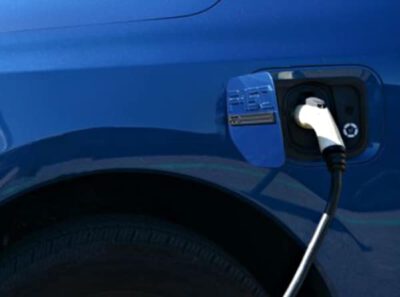
TORONTO, ON — Adam Thorn, Transportation Director at the Pembina Institute, made the following statement in response to the Electric Vehicle Availability Standard released today.
“We are very pleased that the federal government has finalized new regulations that will supply Canadians in every province with more electric cars. Phasing out gas cars is in line with national climate goals and will provide significant health benefits as air toxins from tailpipe emissions are gradually eliminated.
“The regulations mean that manufacturers and importers must gradually increase their supply of electric vehicles (EVs) to dealers until they hit the 2035 target where all new cars sold are emission-free. With more EVs to choose from at the dealership, Canadians will have much greater agency over the kind of vehicle they own. Around the world, we've seen exponential growth in EV sales – in some countries, demand has outstripped automakers' sales targets. Demand has been rising here too, causing long wait times, which should now start getting shorter.
“We can also expect the sticker price on an EV to go down thanks to the increase in availability, which will be a welcome relief for consumers. This is in addition to purchase incentives offered by the federal government and some provinces as well. The other important thing to remember is that over the lifetime of the vehicle, an EV is far less expensive to operate and maintain than a gas car, and you're no longer at the mercy of price volatility at the pump. Charging an EV costs a fraction of the price of filling up the tank – Ottawa Hydro estimates that charging an electric car costs around $300 a year, compared to $1,000 to $2,500 to fill up a comparable gas-powered car.
“However, we still need to see a robust national plan to build out charging infrastructure that can meet energy demand. Range anxiety remains a concern for many drivers. Installing an adequate charging network is as important as the production of EVs to avoid market stagnation and assure people that they will have access to chargers on their road trips.
“And while getting more electric cars on the road is a significant first step, an EV future includes electrifying heavy-duty trucks and buses. In Canada, the biggest source of carbon emissions after oil and gas production is the transportation sector, which generates about a quarter of all of Canada's greenhouse gases. Medium- and heavy-duty vehicles are responsible for 37% of those emissions.
“The reality is that carbon pollution from heavy-duty vehicles continues to rise – faster than emissions from passenger cars. Canada cannot afford to slow down now. Based on the progress that's been made to reduce greenhouse gases from cars, it's time to accelerate the turnover from gas- and diesel-powered vehicles to ones that are either fully electric or hydrogen-fuelled.”
Pembina Institute
www.pembina.org









